In Focus: Photographs by Dorothea Lange, Imogen Cunningham, Ansel Adams, Wynn Bullock, and Judy Dater
The following texts were written by Santa Clara University students Sarah Fisch, Stephen Hua, and Veronica Ribeiro. They offer an in-depth look at five photographers featured in the exhibition Virgin Landscape: Representations of Women and the American West: Dorothea Lange, Imogen Cunningham, Wynn Bullock, Ansel Adams, and Judy Dater.
Click on a button below, or scroll, to learn more about these artists and their work.
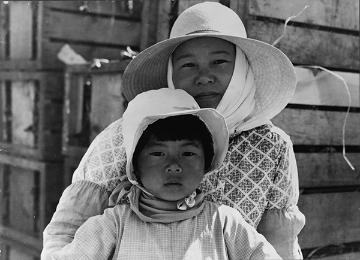
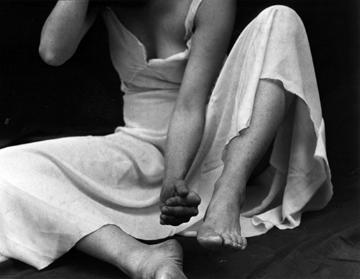
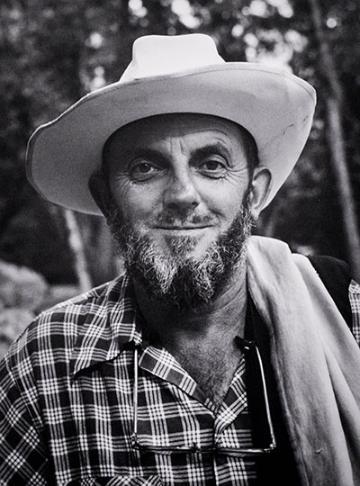
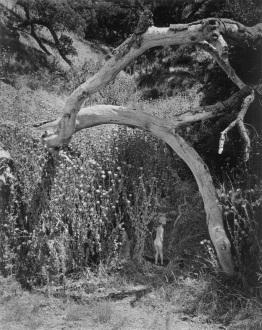
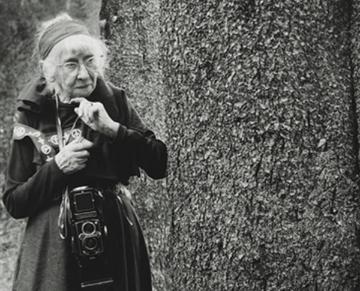
Dorothea Lange’s “Migrant Mothers”
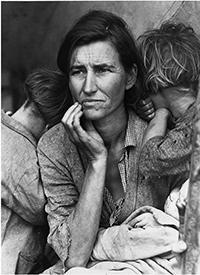

Left: Dorothea Lange, Destitute pea pickers in California. Mother of seven children. Age thirty-two. Nipomo, California, 1936, Library of Congress reprint on Agfa Portriga paper.
Right: Dorothea Lange, Japanese mother and daughter, agricultural workers near Guadalupe, California, 1937, Library of Congress reprint on Agfa Portriga paper. de Saisset Museum permanent collection, Santa Clara University, NDA.6.614
Destitute pea pickers in California (1936), commonly known as “Migrant Mother,” is Dorothea Lange’s most famous work and is one of the most well known photographs of the twentieth century. While many know of the artwork, few know how it was made, or who Lange’s subject was.
Lange took many photographs during the Great Depression, documenting the economic hardships people faced in everyday life. She assisted the federal Farm Security Agency (FSA) in capturing aspects of the New Deal meant to help those in need. Little did she know that among the many thousands of images she made, this photograph would become the iconic image of the Great Depression.
Lange’s photograph almost didn’t come to be: at the end of a long, rainy day on the road, she passed the sign for a pea pickers camp, driving 20 miles toward home before circling back to the camp. The photographer spent about ten minutes with her subjects, making six photographs. Lange recalled, “I did not ask her name or her history. She told me her age, that she was 32. She said that [she and her children] had been living on frozen vegetables from the surrounding fields, and birds that the children killed. She had just sold the tires from her car to buy food.” (Lange 1960, 42-43, 128) “Migrant Mother” shows a woman solemnly gazing into the distance while holding her baby and being embraced by her other two children. The vulnerability and expressiveness of this work has made it the quintessential image of the era. Promoted heavily by the FSA, the photograph was featured in countless magazines, newspapers, museums exhibitions, and photography periodicals.
Yet, many wondered who the woman was and what became of her. In 1978, a Modesto Bee reporter found the woman, Florence Owens Thompson, in a trailer park near Modesto, California. A woman of Cherokee descent who spent most of her years working the land to support her family, Thompson did not benefit financially from Lange’s photograph. When asked about her feelings on the artwork, she expressed being uncomfortable with such exposure. (Stein 2003, 347)
Thompson described her experience during the Great Depression matter-of-factly: “We just existed. Anyway, we lived. We survived, let's put it that way.” When her daughter McIntosh was asked about her experience of that time, she shared that their family never had much. McIntosh said of her mother, “she always made sure we had something. She didn't eat sometimes, but she made sure us children ate.” (Phelan 2014)
Thompson reveals how many women survived on the land during the Great Depression, exhibiting great resilience. Though “Migrant Mother” is her most famous image, Lange frequently documented mothers and children. These portraits cut across lines of race and ethnicity, as seen in Japanese mother and daughter, agricultural workers near Guadalupe, California (1937); the women were united women in the role of motherhood and the shared struggles of poverty. They were providers. They were pioneers. They experienced hardship, but pushed past the limits placed upon them, whether these limits were financial or in the societal expectations of gender.
Imogen Cunningham: Photographing the Dancer’s Body

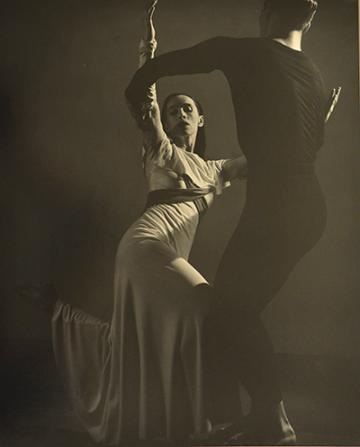
Left: Imogen Cunningham, Martha Graham 86, 1931, gelatin silver print. Photo Courtesy of the Imogen Cunningham Trust.
Right: Barbara Morgan, Martha Graham - American Document, 1938, gelatin silver print. de Saisset Museum permanent collection, Santa Clara University, Focus Gallery Collection, Helen Johnston Bequest, 6.46.1989
Martha Graham was one of the most prominent dancers and choreographers of the twentieth century. Graham is best known for the development of the dance technique called “contraction and release,” which dramatizes the body’s natural movements. As Graham explained, “The release is the moment in life when you inhale: the breathing going out, when you exhale, is the contraction. It's the first and last moments in life and it's used as technique, to increase the emotional activity of the body - so that you're teaching the body, not teaching the mind.” (Kisselgoff 1984)
Hoping to capture Graham’s interest in the expressiveness of the human body, Imogen Cunningham photographed the dancer’s hands and feet. Cunningham highlighted these significant features in an organic way, despite the severe cropping of the images in the series. Although this framing might initially strike viewers as uncomfortable, ultimately the unusual composition allowed Cunningham to draw attention to the body’s strength and sensitivity in a striking, intimate manner. For Graham, the hands and feet were essential components of her dance structures: “Think of what a wonderful thing the hand is and what vast potentialities of movement it has as a hand and not as a poor imitation of something else.” (Daly 1999)
In contrast to Cunningham’s tightly cropped photograph of Graham, Barbara Morgan presented the dancer fluidly moving through space with her partner, Erick Hawkins. Morgan meticulously prepared to photograph Graham, studying dance rehearsals and performances in advance of their photo shoot, and would frequently re-photograph a sequence. (National Museum of Women in the Arts) Morgan’s aim was not simply to capture perfect images, but to express the profound nature of Graham’s dance: “I wanted to show that Martha had her own vision, that what she was conveying was deeper than ego, deeper than baloney… I was trying to connect her spirit with the viewer—to show pictures of spiritual energy.” (Acocella 2011)
Ansel Adams: Seven Things You May Not Know About The Legendary Photographer

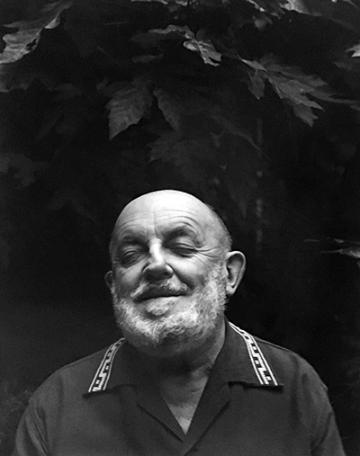
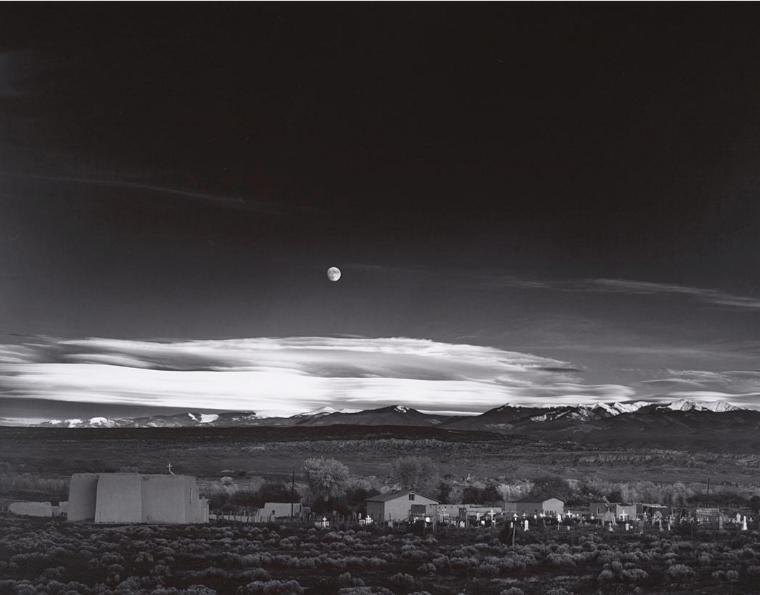
Left: Imogen Cunningham, Ansel Adams, 1953, gelatin silver print. de Saisset Museum permanent collection, Santa Clara University, Focus Gallery Collection, Helen Johnston Bequest, 6.25.1989
Right: Judy Dater, Ansel Adams, 1977, gelatin silver print. de Saisset Museum permanent collection, Santa Clara University, 6.25.1989
Bottom: Ansel Adams, Moonrise, 1948, gelatin silver print. Collection Center for Creative Photography © 2016 The Ansel Adams Publishing Rights Trust
- According to the photographer, Moonrise, Hernandez, New Mexico (1941) is his “most popular single image.” This photo was made after sundown while on a road trip with his son. Adams wanted to capture the twilight sky over the New Mexico landscape; the light of the setting sun vanished so quickly, he was only able to capture one exposure of the scene. Though Adams was a notorious perfectionist in the field and darkroom, he often neglected to record the precise date the image was taken. Dr. David Elmore of the High Altitude Observatory used data from a visit to the site and analysis of the moon’s position in the photograph to determine the picture was made at approximately 4:05 p.m. on October 31, 1941. (Adams 1989, 41-43)
- Adams’s first solo museum exhibition, Pictorial Photographs of the Sierra Nevada Mountains, was held at the Smithsonian Institution in 1931. The exhibition included prints taken in the Sierra Nevada and the Canadian Mountains. A reviewer for the Washington Post declared: “His photographs are like portraits of the giant peaks, which seem to be inhabited by mythical gods.” (Alinder 1996, 77)
- Adams first visited Yosemite in 1916; working with the Sierra Club, he used his images of the region to help promote wilderness preservation. His limited edition book Sierra Nevada: The John Muir Tail was presented before Congress and played a large role in the success of the Kings Canyon area becoming a designated national park in 1940. (Sierra Club)
- Like his contemporary Dorothea Lange, Adams photographed Japanese Americans at the Manzanar War Relocation Center, imprisoned there under Executive Order 9066 from 1942-1945 because of their Japanese ancestry. Adams published these photographs as Born Free and Equal in 1944. In his foreword to the book, Harold L. Ickes, Secretary of the Interior, wrote: “It is my prayer that other Americans will fully realize that to condone the whittling away of the rights of any one minority group is to pave the way for us all to lose the guarantees of the Constitution.” (Adams 1944, 7)
- In 1979 President Jimmy Carter commissioned Adams to take the first official photographic portrait of a president. (Library of Congress) President Carter awarded Adams the Presidential Medal of Freedom in 1980, remarking, “It is through his foresight and fortitude that so much of America has been saved for future Americans.” (Carter 1980)
- Adams relied on his commercial work to allow him to pursue his passion as a fine art photographer. He used money from commercial assignments to support his fine art photography. One of his most famous commercial pieces was a billboard advertisement featuring a photograph of Washburn Point overlooking Yosemite Valley, made for Kodak and placed in Grand Central Station, New York. Known as “Coloramas,” these color photographs were sixty feet long and eighteen feet high. (Alinder 1996, 67) Kodak called them “the world’s largest photographs,” noting that the first transparencies had to be dried in the Kodak employee swimming pool. (O’Neill, 2010)
- Judy Dater’s 1977 portrait of Ansel Adams is part her photographic portfolio, Men and Women II. Dater created her most famous work, Imogen and Twinka at Yosemite, at a workshop organized by Adams, “The Nude in the Landscape.” (Sykes 2012, 19)
Wynn Bullock: Youthful Nature

Wynn Bullock, Child and the Unknown, 1952, gelatin silver print. de Saisset Museum permanent collection, Santa Clara University, Focus Gallery Collection, Helen Johnston Bequest, 6.8.1989
In this photograph and many others created by Wynn Bullock in the 1950s, a child is pictured interacting with nature. Child and the Unknown is reminiscent of one of Bullock’s most famous photographs, Child in the Forest (click here to view). Child in the Forest was included in the exhibition “The Family of Man,” which traveled to 37 countries and was seen by nine million people. (Hartmann, 2010)
Although Child and the Unknown did not stir as much controversy as Child in the Forest, both works encourage the viewer to consider the connections between nature and youthfulness and the relationships between the landscape and the human experience. Bullock’s wife Edna recalled that her husband was distressed to learn that some viewers wondered whether the subject of Child in the Forest was dead or sexually violated, when in fact he intended the work to represent a “virgin child in a virgin forest.” (Shevelev 1993, 112) Child and the Unknown offers similar themes of youthful innocence and natural wonder. By having the child look back at the viewer as she walks into a dark hollow in the foliage, Bullock and the child invite the viewer to join them in exploring the wilds of nature.
Looking closely at the subject Child and the Unknown, the child appears to closely resemble the young girl pictured in Child in the Forest. The subject of Child in the Forest is the photographer’s daughter, Barbara; Bullock frequently photographed all three of his daughters during this period. For Barbara, Lynne, and Mimi, working as models for their father elicited a mixture of youthful pride and impatience. Barbara recalled the discomfort of scratchy dry leaves and nettles beneath her body in Child in the Forest, while Lynne, Barbara’s younger sister, recollected going on a family picnic and automatically disrobing, assuming she was to model for her father. Upon learning her dad was not going to take pictures that day, she burst into tears. (Shevelev, 112)
For Bullock, these images implied an essential sense of balance. In order to understand age, the photographer believed, one must know its opposite, youth. Showing youthful skin next to aged wood or fallen leaves allows one to contemplate natural cycles and the larger time spans of the universe. As Barbara remarked, “Everything also had a unique time defined by its own functioning and its functioning in relation to other things past, present, and future.” (Fuess 1976, 8)
Judy Dater: What does Judy Dater really think about her most famous work, Imogen and Twinka at Yosemite?
Find out by clicking here (please note: image on the following page contains a nude figure.)
Works Cited
Acocella, Joan. “An Unforgettable Photo of Martha Graham.” Smithsonian Magazine, June 2011. Accessed November 20, 2016. http://www.smithsonianmag.com/arts-culture/an-unforgettable-photo-of-martha-graham-159709338/
Adams, Ansel. Born Free and Equal. New York: U.S. Camera, 1944.
Adams, Ansel. Examples: The Making of 40 Photographs. New York: Little, Brown and Company, 1989.
Alinder, Mary Street. Ansel Adams: A Biography. New York: Henry Holt, 1996.
Bullock, Wynn and Raphael Shevelev. Wynn Bullock: The Enchanted Landscape: Photographs from 1940-1975. New York: Aperture, 1993
Carter, Jimmy. “Presidential Medal of Freedom Remarks at the Presentation Ceremony.” June 9, 1980. Online by Gerhard Peters and John T. Woolley, The American Presidency Project. Accessed October 13, 2016. http://www.presidency.ucsb.edu/ws/?pid=45389
Daly, Ann. “An Inspiration Compounded of Hands and Feet.” New York Times, January 31, 1999. Accessed November 20, 2016. http://partners.nytimes.com/library/arts/013199cunningham-graham-photos.html
Fuess, David. Wynn Bullock. New York: Aperture, 1976.
Hartmann, Celia. “Edward Steichen Archive: The 55th Anniversary of The Family of Man.” Museum of Modern Art, November 17, 2010. Accessed November 20, 2016. https://www.moma.org/explore/inside_out/2010/11/17/edward-steichen-archive-the-55th-anniversary-of-the-family-of-man
Kisselgoff, Anna. “For Martha Graham, Change is Still the Only Constant.” New York Times, February 19, 1984. Accessed November 20, 2016. http://partners.nytimes.com/library/arts/021984graham.html
Lange, Dorothea. “The Assignment I’ll Never Forget.” Popular Photography 46, no. 2 (February 1960): 42-43, 128.
Library of Congress. “Ansel Adams Chronology.” Accessed October 13, 2016. http://www.loc.gov/pictures/collection/manz/chronologyadams.html
Library of Congress. “Dorothea Lange's "Migrant Mother" Photographs in the Farm Security Administration Collection: An Overview.” Accessed October 13, 2016. https://www.loc.gov/rr/print/list/128_migm.html
National Museum of Women in the Arts. “Puritan Love Duet (From ‘An American Document’) 1939.” Accessed November 20, 2016. https://nmwa.org/works/puritan-love-duet-american-document
O’Neill, Claire. “Colorama: ‘The World’s Largest Photographs’ Are Back.” National Public Radio, July 29, 2010. Accessed October 13, 2016. http://www.npr.org/sections/pictureshow/2010/07/28/128831822/colorama
Phelan, Ben. “The Story of the Migrant Mother.” PBS, April 14, 2014. Accessed October 13, 2016. http://www.pbs.org/wgbh/roadshow/stories/articles/2014/4/14/migrant-mother-dorothea-lange/
Sierra Club. “History: Ansel Adams.” Accessed October 13, 2016. http://vault.sierraclub.org/history/ansel-adams/
Stein, Sally. “Passing Likeness: Dorothea Lange’s ‘Migrant Mother’ and the Paradox of Iconicity.” In Only Skin Deep: Changing Visions of the American Self, edited by Coco Fusco and Brian Wallis, 345-55. New York: Harry N. Abrams, 2003.
Sykes, Claire. “Judy Dater: Seeing and Being Seen.” Photographer’s Forum (Fall 2012): 10-20.
Troy, Francisco. 2013. Judy Dater, Imogen & Twinka. Film. Accessed October 13, 2016. https://vimeo.com/64916681
